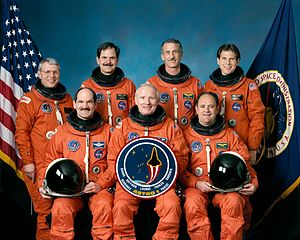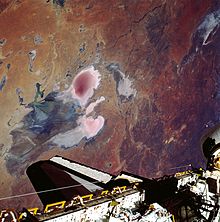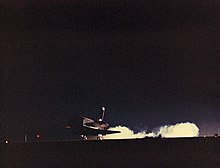
The Space Shuttle is a retired, partially reusable low Earth orbital spacecraft system operated from 1981 to 2011 by the U.S. National Aeronautics and Space Administration (NASA) as part of the Space Shuttle program. Its official program name was Space Transportation System (STS), taken from a 1969 plan for a system of reusable spacecraft where it was the only item funded for development. The first (STS-1) of four orbital test flights occurred in 1981, leading to operational flights (STS-5) beginning in 1982. Five complete Space Shuttle orbiter vehicles were built and flown on a total of 135 missions from 1981 to 2011. They launched from the Kennedy Space Center (KSC) in Florida. Operational missions launched numerous satellites, interplanetary probes, and the Hubble Space Telescope (HST), conducted science experiments in orbit, participated in the Shuttle-Mir program with Russia, and participated in construction and servicing of the International Space Station (ISS). The Space Shuttle fleet's total mission time was 1,323 days.

The George C. Marshall Space Flight Center (MSFC), located in Redstone Arsenal, Alabama, is the U.S. government's civilian rocketry and spacecraft propulsion research center. As the largest NASA center, MSFC's first mission was developing the Saturn launch vehicles for the Apollo program. Marshall has been the lead center for the Space Shuttle main propulsion and external tank; payloads and related crew training; International Space Station (ISS) design and assembly; computers, networks, and information management; and the Space Launch System (SLS). Located on the Redstone Arsenal near Huntsville, MSFC is named in honor of General of the Army George C. Marshall.

Spacelab was a reusable laboratory developed by European Space Agency (ESA) and used on certain spaceflights flown by the Space Shuttle. The laboratory comprised multiple components, including a pressurized module, an unpressurized carrier, and other related hardware housed in the Shuttle's cargo bay. The components were arranged in various configurations to meet the needs of each spaceflight.

STS-9 was the ninth NASA Space Shuttle mission and the sixth mission of the Space Shuttle Columbia. Launched on 28 November 1983, the ten-day mission carried the first Spacelab laboratory module into orbit.
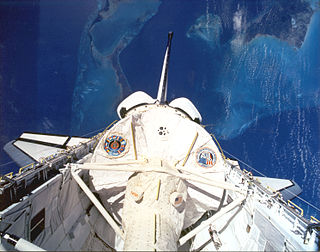
STS-50 was a NASA Space Shuttle mission, the 12th mission of the Columbia orbiter. Columbia landed at Kennedy Space Center for the first time ever due to bad weather at Edwards Air Force Base caused by the remnants of Hurricane Darby.

STS-93 in 1999 marked the 95th launch of the Space Shuttle, the 26th launch of Columbia, and the 21st night launch of a Space Shuttle. Eileen Collins became the first female shuttle Commander on this flight. Its primary payload was the Chandra X-ray Observatory. It would also be the last mission of Columbia until March 2002. During the interim, Columbia would be out of service for upgrading, and would not fly again until STS-109. The launch was originally scheduled for 20 July but the launch was aborted at T−7 seconds. The successful launch of the flight occurred 3 days later. The payload was also the heaviest payload ever carried by the Space Shuttle system, at over 22.7 tonnes.

STS-38 was a Space Shuttle mission by NASA using the Space Shuttle Atlantis. It was the 37th shuttle mission, and carried a classified payload for the U.S. Department of Defense (DoD). It was the seventh flight for Atlantis and the seventh flight dedicated to the Department of Defense. The mission was a 4-day mission that traveled 3,291,199 km (2,045,056 mi) and completed 79 revolutions. Atlantis landed at Kennedy Space Center's Shuttle Landing Facility's runway 33. The launch was originally scheduled for July 1990, but was rescheduled due to a hydrogen leak found on Space ShuttleColumbia during the STS-35 countdown. During a rollback to the Orbiter Processing Facility Atlantis was damaged during a hail storm. The eventual launch date of November 15, 1990, was set due to a payload problem. The launch window was between 18:30 and 22:30 EST. The launch occurred at 18:48:13 EST.
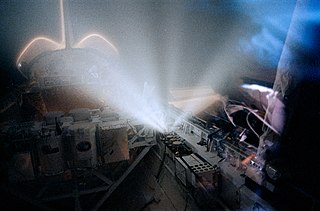
STS-39 was the twelfth mission of the NASA Space Shuttle Discovery, and the 40th orbital shuttle mission overall. The primary purpose of the mission was to conduct a variety of payload experiments for the U.S. Department of Defense (DoD).

STS-40, the eleventh launch of Space Shuttle Columbia, was a nine-day mission in June 1991. It carried the Spacelab module for Spacelab Life Sciences 1 (SLS-1), the fifth Spacelab mission and the first dedicated solely to biology. STS-40 was the first spaceflight that included three women crew members.

STS-45 was a 1992 NASA Space Shuttle mission using the Space ShuttleAtlantis. Its almost nine-day scientific mission was with a non-deployable payload of instruments. It was the 46th Space Shuttle mission and the 11th for Atlantis.
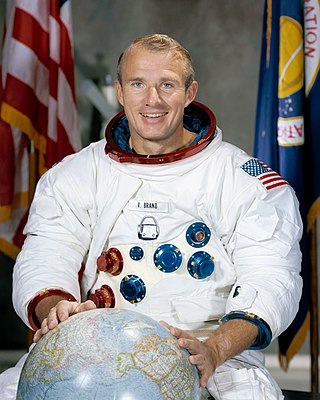
Vance DeVoe Brand is an American naval officer, aviator, aeronautical engineer, test pilot, and NASA astronaut. He served as command module pilot during the first U.S.-Soviet joint spaceflight in 1975, and as commander of three Space Shuttle missions.

STS-55, or Deutschland 2 (D-2), was the 55th overall flight of the NASA Space Shuttle and the 14th flight of Shuttle Columbia. This flight was a multinational Spacelab flight involving 88 experiments from eleven different nations. The experiments ranged from biology sciences to simple Earth observations.

STS-67 was a human spaceflight mission using Space ShuttleEndeavour that launched from Kennedy Space Center, Florida on 2 March 1995.

STS-71 was the third mission of the US/Russian Shuttle-Mir Program and the first Space Shuttle docking to Russian space station Mir. It started on June 27, 1995, with the launch of Space Shuttle Atlantis from launchpad 39A at the Kennedy Space Center in Florida. The Shuttle delivered a relief crew of two cosmonauts Anatoly Solovyev and Nikolai Budarin to the station and recovered Increment astronaut Norman Thagard. Atlantis returned to Earth on July 7 with a crew of eight. It was the first of seven straight missions to Mir flown by Atlantis, and the second Shuttle mission to land with an eight-person crew after STS-61-A in 1985.

STS-83 was a NASA Space Shuttle mission flown by Columbia. It was a science research mission that achieved orbit successfully, but the planned duration was a failure due to a technical problem with a fuel cell that resulted in the abort of the 15 day duration. Columbia returned to Earth just shy of four days. The mission was re-flown as STS-94 with the same crew later that year.

Jeffrey Alan Hoffman is an American former NASA astronaut and currently a professor of aeronautics and astronautics at MIT.

Ronald Anthony Parise was an Italian American scientist who flew aboard two NASA Space Shuttle missions as a payload specialist.
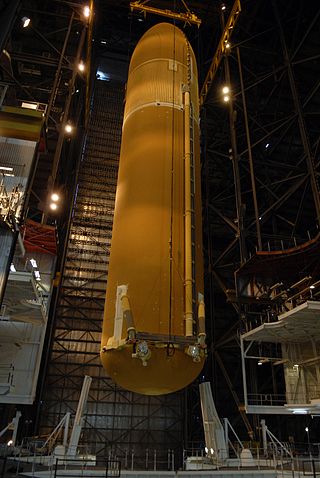
The Space Shuttle external tank (ET) was the component of the Space Shuttle launch vehicle that contained the liquid hydrogen fuel and liquid oxygen oxidizer. During lift-off and ascent it supplied the fuel and oxidizer under pressure to the three RS-25 main engines in the orbiter. The ET was jettisoned just over 10 seconds after main engine cut-off (MECO) and it re-entered the Earth's atmosphere. Unlike the Solid Rocket Boosters, external tanks were not re-used. They broke up before impact in the Indian Ocean, away from shipping lanes and were not recovered.

The Broad Band X-ray Telescope (BBXRT) was flown on the Space Shuttle Columbia (STS-35) from December 2 through December 11, 1990 as part of the ASTRO-1 payload. The flight of BBXRT marked the first opportunity for performing X-ray observations over a broad energy range with a moderate energy resolution.

STS-61-E was a NASA Space Shuttle mission planned to launch on 6 March 1986 using Columbia. It was canceled after the Challenger disaster.


